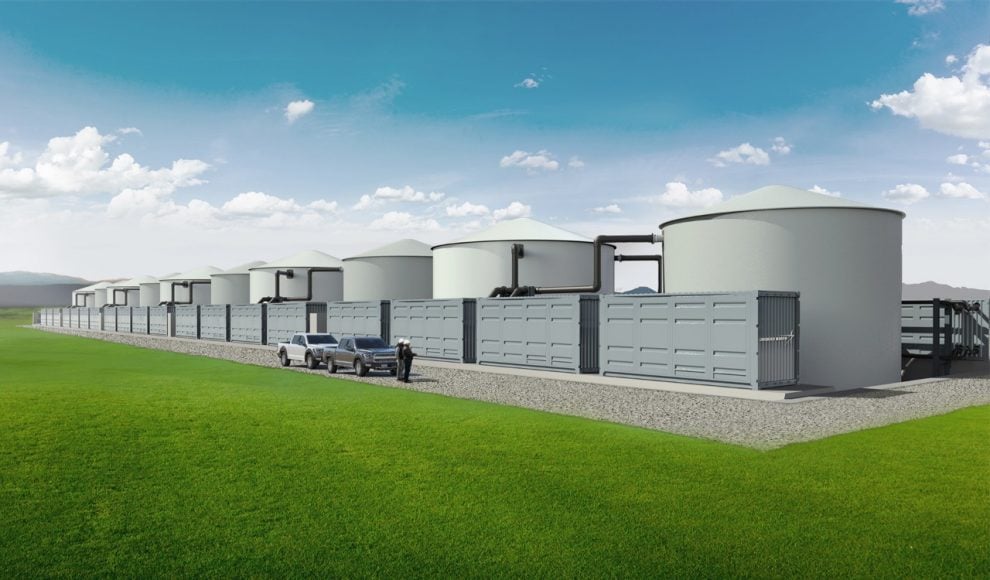Colorado, California Reach Long-Duration Energy Storage Milestones
Colorado and California have established long-duration energy storage with flow battery technology and are leading the way toward a clean energy future.
In this article, we will explore the recent breakthroughs in long-duration grid-scale energy storage for military base operations and statewide clean energy transition goals. Both Colorado and California are under the spotlight as each state gears up for renewable power generation with flow battery technology to advance the clean energy transition.
GridStar Flow is Lockheed Martin’s LDES solution for large-scale energy storage applications. Image used courtesy of Lockheed Martin
Flow Batteries Store Energy in Liquid Form
A flow battery is a type of rechargeable battery that stores energy in liquid form. It consists of two tanks, each filled with an electrolyte solution, and a membrane that separates the two solutions.
The battery generates electricity by pumping the electrolyte from one tank to the other through a semipermeable membrane. When discharged, the electrolyte is pumped back into its original tank and recharged by exposure to an electric current.
There are many use cases for flow batteries. They can be used as backup power sources for solar and wind power plants, in electric vehicles (EVs) to extend their range, aboard ships, and in remote locations such as mines or oil rigs.
Flow Battery to Be Installed at Fort Carson
In what has been heralded as a groundbreaking event, Paul Farnan, the principal deputy assistant secretary of the Army (Installations, Energy, and Environment, ASA IE&E); Fort Carson Garrison Commander Col. Sean Brown; and Steven Botwinik, vice president for Advanced Programs Execution and Transition at Lockheed Martin Missiles and Fire Control, all took part in a ceremony for the soon-to-be installed flow battery at Fort Carson, Colorado. Dr. Andy Nelson, director of the U.S. Army Engineer Research and Development Center’s (ERDC) Construction Engineering Research Laboratory (CERL), also took part.
Video used courtesy of Lockheed Martin
The U.S. Army ERDC Operational Energy (OE) team at the CERL was chosen to head the management of the flow battery. Once installed, the OE team will also test and evaluate the flow battery over two years. A final report concerning the battery’s performance will also be completed.
Overall, the Lockheed Martin flow battery is expected to provide long-duration energy storage (LDES) to Fort Carson, along with its mission-critical assets. Construction of the battery is expected to begin in late 2023 with commissioning planned for 2024.
Viejas Enterprise Microgrid Project to Supply Solar Power
As part of California’s LDES program and with partial funding of $31 million from the California Energy Commission (CEC), Indian Energy and its project partners will deliver the Viejas Enterprise Microgrid system. The microgrid project will provide the Viejas Casino and Resort (situated on the lands of the Viejas Band of Kumeyaay Indians) with clean solar power.
The project will use 30,000 solar panels to provide 15 megawatts (MW) of clean power and 60 megawatt-hours (MWh) of LDES in the form of a zinc hybrid cathode battery system from Eos Energy Enterprises and a vanadium flow battery from Invinity Energy Systems. The 10-MWh vanadium battery is set to be the largest of its kind in the United States once constructed.
The CEC awards a $31 million grant to support the Viejas Enterprise Microgrid project. Image used courtesy of Invinity
Infinity’s batteries are designed with safety in mind—since they do not catch fire—and durability. Infinity’s vanadium batteries are almost 100 percent recyclable and have a life cycle of around 25-plus years or more. Recyclability helps to minimize environmental impact and lower disposal costs.
Together, the vanadium battery will operate alongside the Eos zinc hybrid cathode battery—in what will be one of the largest hybrid energy storage systems ever made—to optimize microgrid operation.








